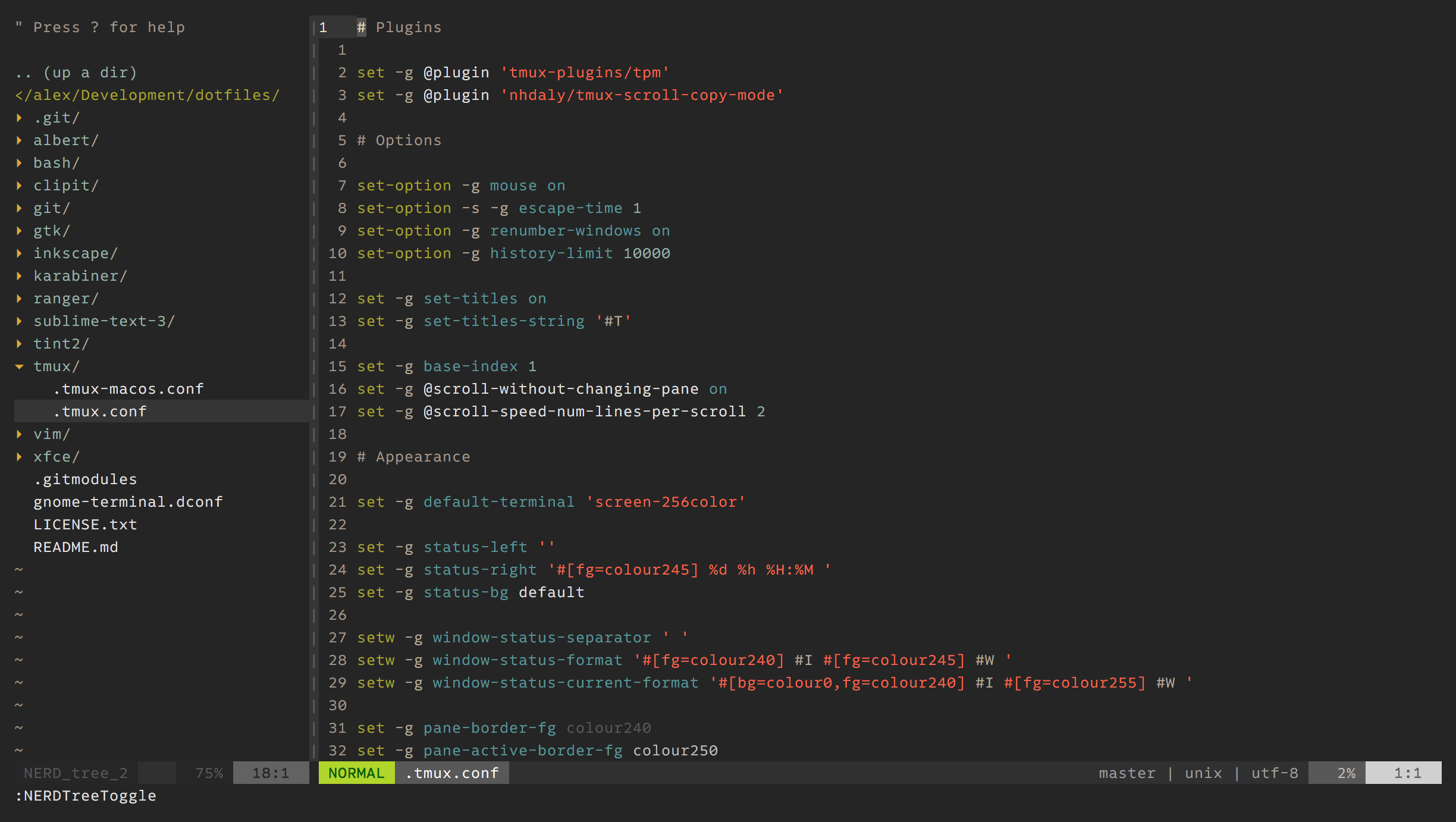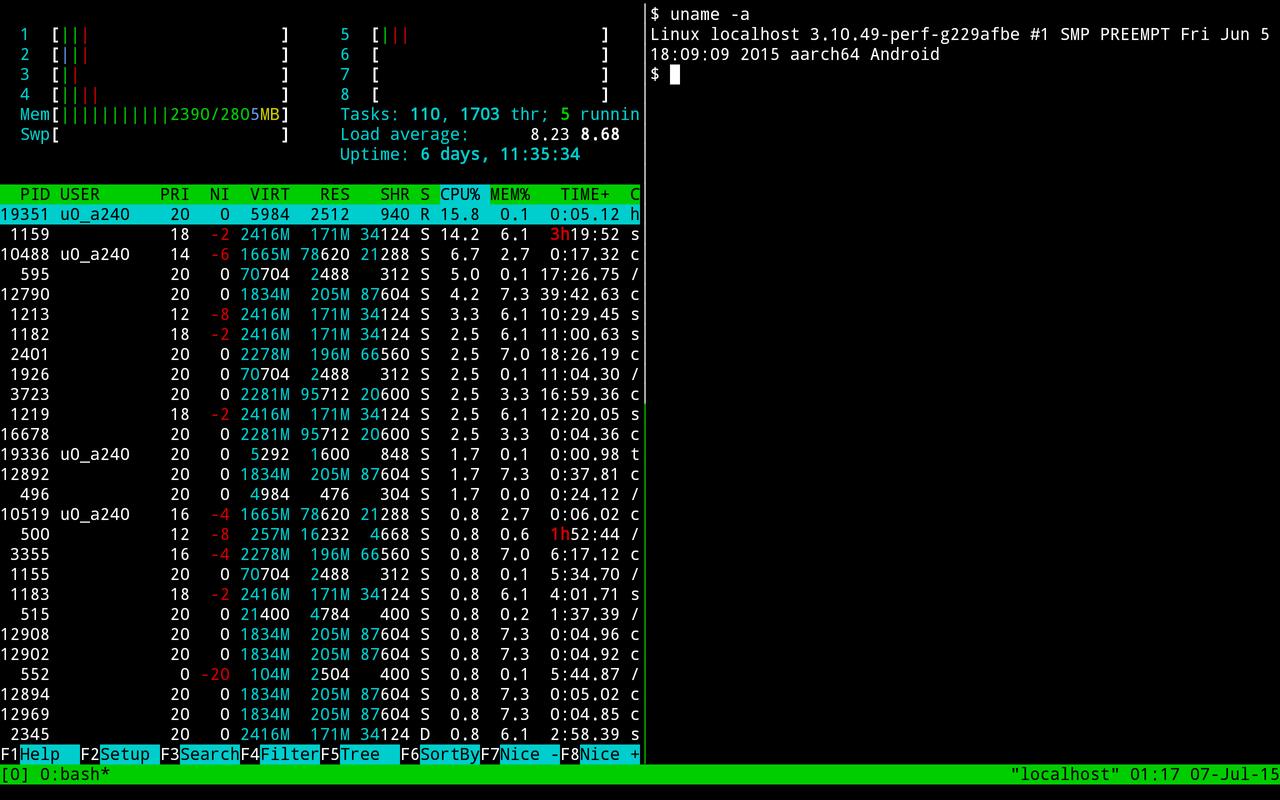About the App
- App name: vim
- App description: Vi “workalike”” with many additional features
- App website: http://www.vim.org/
Install the App
$ sudo apt install vim On Debian, Ubuntu and Mint $ sudo dnf install vim On RHEL, CentOS and Fedora $ sudo pacman -S vim On Arch Linux and Manjaro $ sudo zypper install vim On OpenSuse Although Vim 8.2 is out, it will take a good amount of time before it gets into official software repositories for the different Linux distributions. To install vim without extra features, just use this command: sudo port install vim. To install vim with support for python 2.6 and the huge feature set, issue the following command: sudo port install vim +python26 +huge. This command will download, compile, and install the vim port from the vim website with the specified build options. I'd use Homebrew to install Vim on macOS, with brew install vim, but the Homebrew Formula for Vim seems to install many additional features that I don't need. For example, while I do plan on using Vim to edit Ruby files, I don't plan on using the Ruby interface to Vim. (See:help ruby.). Sep 24, 2019 Normally when you have to edit a file in the terminal, you use vim filename command for that. But some command line utilities allow you to edit their configuration files in the default text editor. Since Nano is the default text editor in Ubuntu, you might not like that the files are being opened in Nano. Further learning. Select visually, add w /myPartialfile.txt when you select visualy, after type ':' in order to enter a command, you'll see ' appear after the ':' 'w /myfile.

- Press
Command+Spaceand type Terminal and press enter/return key. - Run in Terminal app:
ruby -e '$(curl -fsSL https://raw.githubusercontent.com/Homebrew/install/master/install)' < /dev/null 2> /dev/null
and press enter/return key.
If the screen prompts you to enter a password, please enter your Mac's user password to continue. When you type the password, it won't be displayed on screen, but the system would accept it. So just type your password and press ENTER/RETURN key. Then wait for the command to finish. - Run:
brew install vim
Done! You can now use vim.”
Similar Software for Mac
Question or issue on macOS:
I have MacVim installed and I am trying to set it up as the editor for Git (version control), but I can’t run ‘mvim’ from the command line as it isn’t recognised. How do I setup mvim so I can run it from Terminal?
How to solve this problem?
Solution no. 1:
There should be a script named mvim in the root of the .bz2 file. Copy this somewhere into your $PATH ( /usr/local/bin would be good ) and you should be sorted.
Solution no. 2:
I don’t think I’d to add anything to the path, did
should then open macvim in the terminal, you can also go ahead and alias that
Solution no. 3:
If you go the brew route, the best way to install would be:
That will provide mvim, vim, vi, view, etc. in /usr/local/bin (all symlinked to the copy in the Cellar). This also removes the need to create any aliases and also changes your vi, vim, etc. to all use the same Vim distribution as your MacVim.
Install Vim Mac Terminal Free
Solution no. 4:
In addition, if you want to use MacVim (or GVim) as $VISUAL or $EDITOR, you should be aware that by default MacVim will fork a new process from the parent, resulting in the MacVim return value not reaching the parent process. This may confuse other applications, but Git seems to check the status of a temporary commit message file, which bypasses this limitation. In general, it is a good practice to export VISUAL='mvim -f' to ensure MacVim will not fork a new process when called, which should give you what you want when using it with your shell environment.
Solution no. 5:
If you already have macVim installed: /Applications/MacVim.app/Contents/MacOS/Vim -g will give you macVim GUI.
just add an alias.

i use gvim because that is what i use on linux for gnome-vim.
alias gvim='/Applications/MacVim.app/Contents/MacOS/Vim -g'
Solution no. 6:
Assume MacVim is installed in the Application folder.
Instead of adding MacVim path to your environment, create a link by typing this in terminal:
sudo ln -s /Applications/MacVim.app/Contents/bin/mvim /usr/local/bin/mvim
Then, open a new terminal window/tab and type mvim.
Solution no. 7:
If you have homeBrew installed, this is all you have to do:

Then type mvim in your terminal to run MacVim.
Solution no. 8:
Here’s what I did:
After building Macvim I copied mvim to one of my $PATH destinations (In this case I chose /usr/local/bin)
Then when you invoke mvim it is now recognised but there is an annoying thing. It opens the visual MacVim window, not the one in terminal. To do that, you have to invoke
Mac Vim Gui
To make sure every time you call mvim you don’t have to remember to add the ‘-v’ you can create an alias:
alias mvim=’mvim -v’
However, this alias will only persist for this session of the Terminal. To have this alias executed every time you open a Terminal window, you have to include it in your .profile
The .profile should be in your home directory. If it’s not, create it.
Install Vim Mac Terminal For Windows 7
include the alias command in there and save it.
That’s it.
Solution no. 9:

I’m adding Bard Park’s comment here for that was the real answer for me:
Since mvim is simply a shell script, you can download it directly from the MacVim source at GitHub here: http://raw.github.com/b4winckler/macvim/master/src/MacVim/mvim
Solution no. 10:
I’d seriously recommend installing MacVim via MacPorts (sudo port install MacVim).
When installed, MacPorts automatically updates your profile to include /opt/local/bin in your path, and so when mvim is installed as /opt/local/bin/mvim during the install of MacVim you’ll find it ready to use straight away.
When you install the MacVim port the MacVim.app bundle is installed in /Applications/MacPorts for you too.
A good thing about going the MacPorts route is that you’ll also be able to install git too (sudo port install git-core) and many many other ports. Highly recommended.
Hope this helps!
